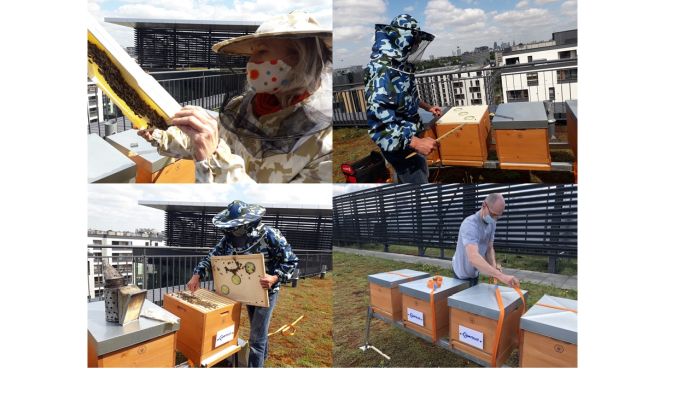News
WARBUD News
WARBUD has installed four beehives on top of the office building at ul. 32 Domaniewska St. in Warsaw. The building is the headquarters of the company. ‘We have adopted four bee families, that is approximately 240 thousand bees,’ says Agnieszka Kepka, WARBUD’s environmental protection officer. We have chosen Krainka breed bees from the Hinderhofer AGT line as they are gentle and low swarm-forming. In one hive in the peak season there will be 60 thousand bees. They will penetrate the area within a radius of two kilometres in search of nectar and pollen. ‘We started thinking about creating a home for bees on our roof a long time ago. This would not be possible without the cooperation of the company Hines managing our facility who were open to WARBUD’s initiative and helped us to install hives on top of the office building. I am happy that we were able to add together a little bio-brick to the local ecosystem,’ emphasizes A. Kepka.
‘Honey made by 'urban' bees is as good if not even better than honey made by bees living in rural areas. There is sometimes more honey produced in the same period of time,’ explains Bartłomiej Grabowski from the company Bee City which will take care of WARBUD’s apiary. Why? ‘There are no large-area monoculture crops or plants sprayed with chemicals or pesticides. Throughout the summer there is always something is blooming and we have the so-called bee-nutrient continuation. Bees therefore have not only plenty of food but a more interesting and varied diet,’ he says. The new office building tenants eat a lot. To function well bees need approximately 100 kg of honey and 30 kg of pollen per year. To produce just 1 kg of honey, they fly around 4 million flowers. They have so much work to do then. That is why they have such a significant impact on the biodiversity of the area in which they are located. When pollinating flowers, they contribute significantly to flowering intensity which in turn attracts more insects feeding on plants providing pollen. Bees also contribute to an increase in the number of birds and mammals feeding on plants or insects.




